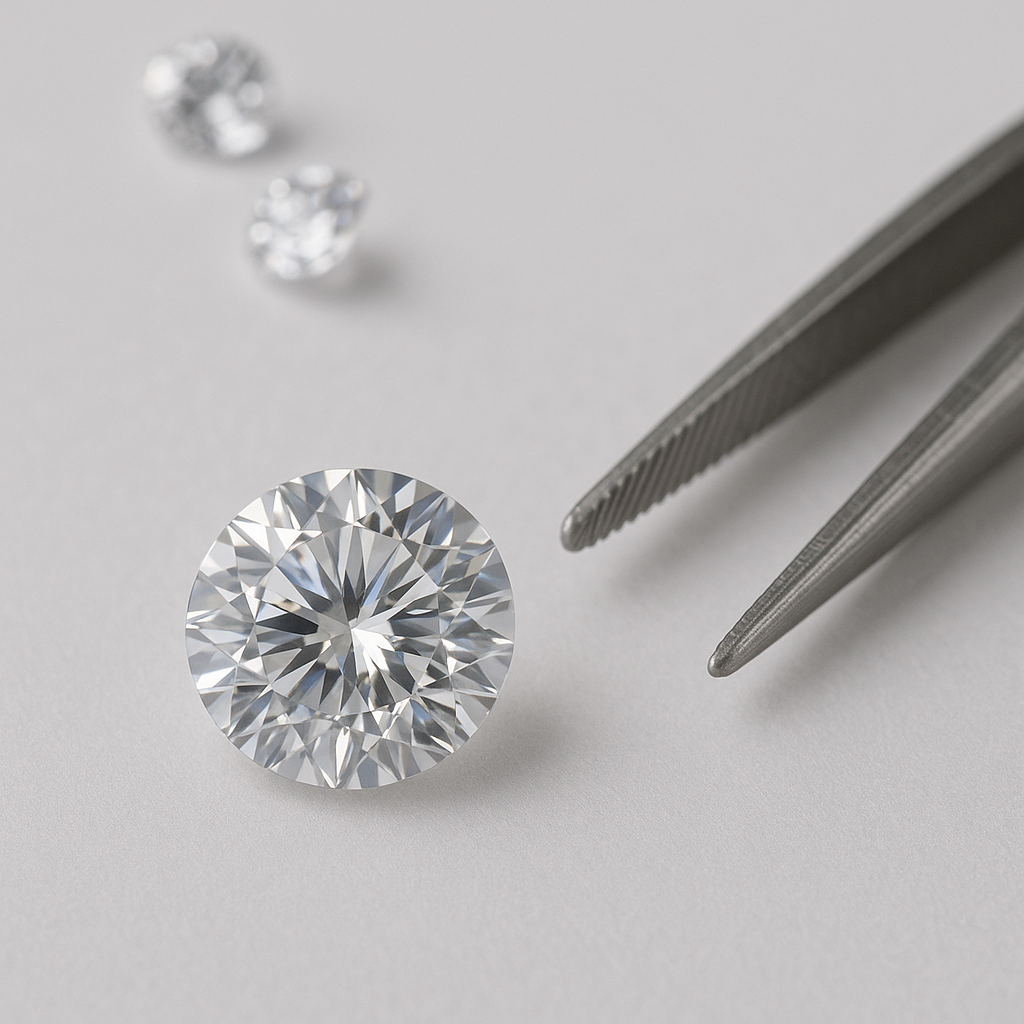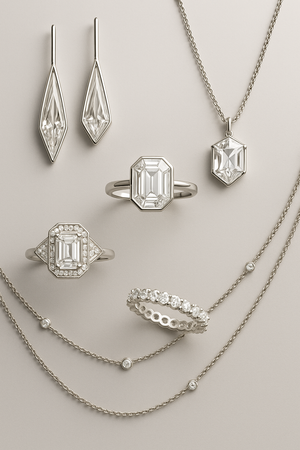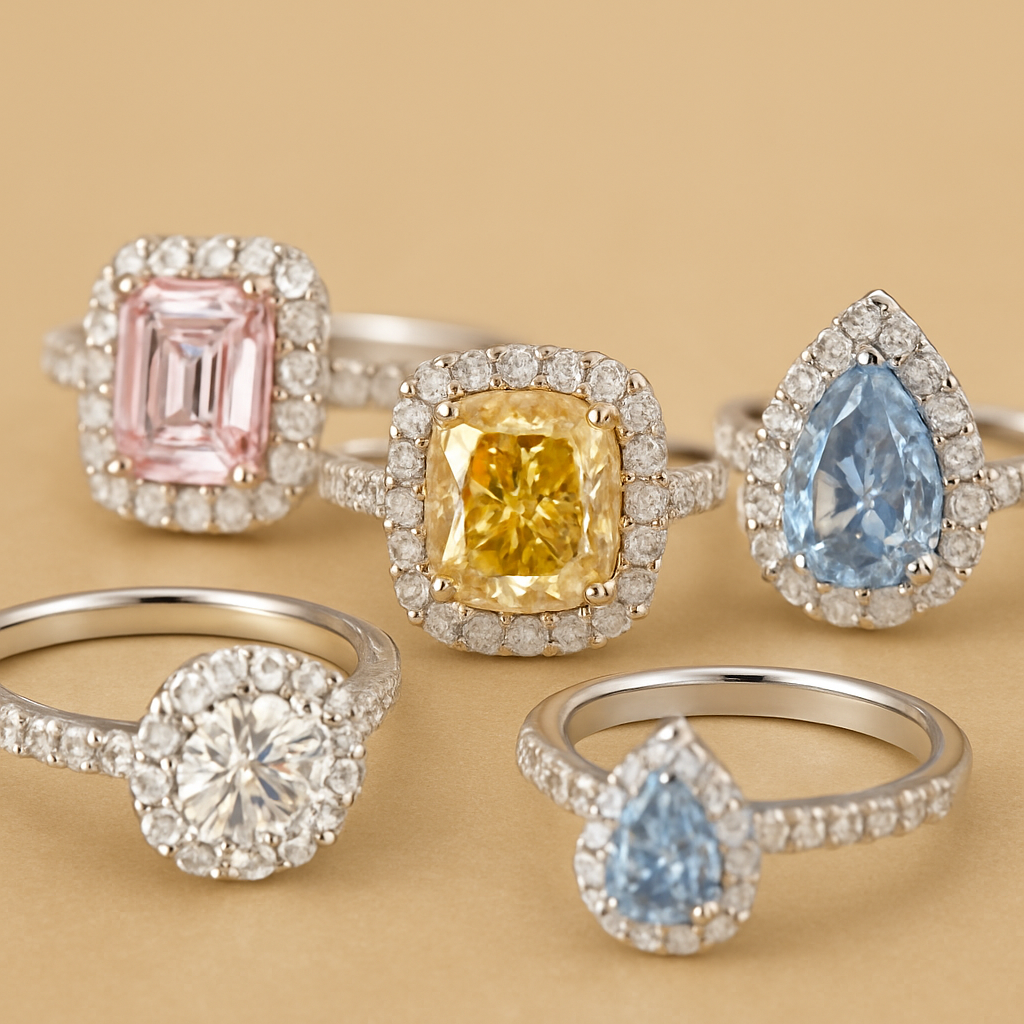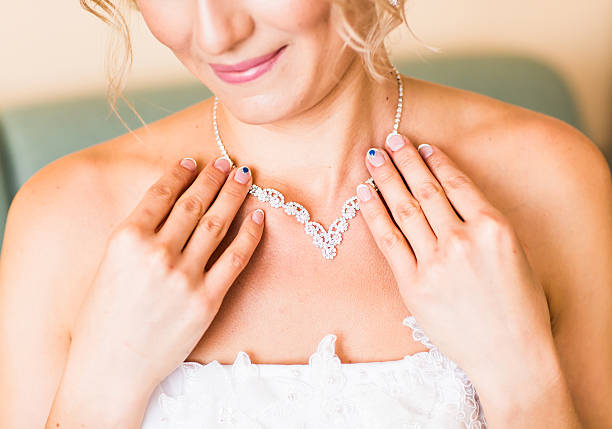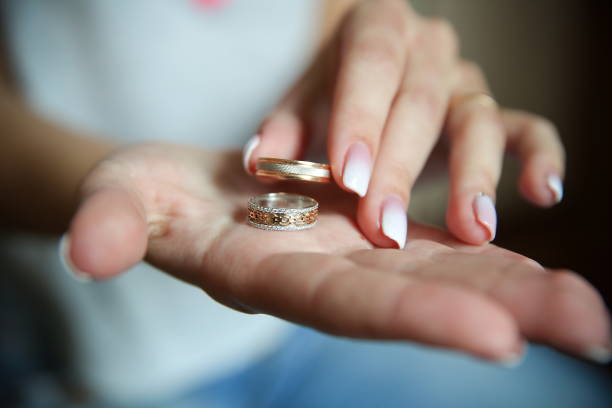✨ Introduction: The Sparkle Revolution
Diamonds have long been associated with commitment, luxury, and love. However, lab-grown diamonds are a new trend that has taken over the jewelry industry in recent years. These gorgeous gems are revolutionizing the way we view fine jewelry by providing a cost-effective, environmentally friendly, and just as stunning substitute for diamonds that are extracted from the earth.
This thorough guide is for anyone who has ever questioned, "Are lab diamonds real?" "How are they made?" or "Should I choose one for my engagement ring?"
💎 1. What Are Lab Diamonds?
Lab-grown diamonds, or man-made, cultured, or synthetic diamonds, are diamonds that have been synthesized in a laboratory using sophisticated technological processes. In spite of the word "synthetic," these diamonds are 100% natural.
They consist of pure carbon atoms with the same crystal structure as natural diamonds, sharing the same physical, chemical, and optical properties. To the unaided eye (and even with a microscope), they cannot be told apart from natural diamonds unless tested using special equipment.
In brief:
- Not a simulant diamond like cubic zirconia or moissanite
- No compromise on beauty, brilliance, or hardness
- Frequently certified by IGI, GIA, or GCAL
Get more information about lab grown diamond....
🧪 2. How Are Lab Diamonds Made?

There are two main processes for producing diamonds in the laboratory:
➤ High Pressure High Temperature (HPHT)
- Recreates the natural process deep within the Earth
- Applies extremely high pressure and heat (well above 1500°C and 1.5 million PSI)
- Grows diamonds from a tiny carbon seed within weeks
- Creates both gem-quality and industrial diamonds
➤ Chemical Vapor Deposition (CVD)
- A newer, more cost-effective process
- Sets a diamond seed in a vacuum chamber containing carbon-rich gas
- Carbon atoms accumulate layer by layer onto the seed, crystallizing in a diamond
- Enables the precise control of clarity and color
Both techniques produce breathtaking, genuine diamonds that are almost indistinguishable from those created over billions of years in the Earth's crust.
Tap here to get more information.....
✅ 3. Are Lab Diamonds Real Diamonds?
Yes — lab diamonds are 100% genuine diamonds. They aren't imitations, synthetic in nature, or fake.
They:
- Share the same chemical makeup (pure carbon)
- Have the same hardness (10 on the Mohs scale)
- Reflect and refract light in the same manner as natural diamonds
- Can be graded by top gemological laboratories
The only variation is in their source — one is created above ground, the other beneath.
Consider it the same as ice produced in a freezer versus ice from a glacier — both are water, both melt similarly, and both exist.
🌱 4. Are Lab Diamonds Ethical and Eco-Friendly?
Yes. Perhaps the largest factor for why lab diamonds are becoming more popular is due to their beneficial environmental and ethical influence.
Yes. Perhaps the largest factor for why lab diamonds are becoming more popular is due to their beneficial environmental and ethical influence.
Here's why:
- No Mining Involved: Stops land devastation, water loss, and forest destruction
- Human Rights: No connection to conflict regions or child labor
- Reduced Carbon Footprint: Particularly in labs powered with renewable energy
- Traceability: You have complete knowledge of where your diamond was sourced
In a more and more sustainable world, lab-grown diamonds represent a guilt-free shine.
Tap here to get more information....
💰 5. How Much Do Lab Diamonds Cost?
Lab diamonds are 30–50% cheaper than equivalent-quality natural diamonds. The reason for this price disparity is:
- A reduced supply chain
- No mining overheads
- Scalable production techniques
💡For instance:
- A 1-carat mined diamond may be $6,000
- The same lab-created diamond may be about $3,500
This cost savings makes lab diamonds a great choice for:
- Frugal consumers
- Those seeking larger carat sizes without an outrageous price tag
- Couples who value ethical sourcing
📏 6. How to Choose a Lab Diamond – The 4Cs
Similar to natural diamonds, lab diamonds are graded according to the 4Cs created by the Gemological Institute of America (GIA):
1. Cut
- Influences how well a diamond shines
- Ideal or Excellent cut grades optimize light reflection
2. Color
- Graded from D (colorless) to Z (light yellow/brown)
- Most consumers like D–F for a clean, icy appearance
3. Clarity
- Refers to the number and nature of inclusions
- VS1, VS2 (Very Slightly Included) are popular sweet spots
- Larger isn't necessarily greater — focus on cut and balance with budget
- Lab diamonds allow it to go larger without the tremendous price jump
📝 Tip: Always inspect the grading certificate to ensure quality.
Tap here for San Liora Diamond collection...
📜 7. Are Lab Diamonds Certified and Graded?
Yes! Lab diamonds are graded by the same organizations that grade natural diamonds:
- IGI (International Gemological Institute)
- GIA (Gemological Institute of America)
- GCAL (Gem Certification & Assurance Lab)
These reports include:
- Cut, color, clarity, and carat weight
- Laser inscriptions on the girdle
- Origin indication (lab-grown or natural)
Always request the certificate prior to buying to ensure transparency.
Tap here to get more information...
🛒 8. Where to Buy Lab Diamonds?
Lab-grown diamonds are now widely available both online and in stores. Here are some trusted options:
✨ Online Retailers:
- San Liora - Ethical sourcing focus
✨ Physical Stores:
- Local jewelers often carry lab diamonds or can custom order
- Ensure you’re receiving a certified stone
🧠 Tips:
- Look for a clear return policy
- Ask for IGI/GIA certificates
- Consider lifetime warranty options
🧠 9. Common Myths & FAQs
Let’s bust some myths:
❌ Myth: Lab diamonds are fake
✅ Truth: They’re chemically identical to mined diamonds
❌ Myth: They don’t sparkle as much
✅ Truth: They sparkle just as brilliantly — it depends on the cut, not the origin
❌ Myth: They’re not durable
✅ Truth: Both are a 10 on the Mohs hardness scale — hardest known material on Earth
❌ Myth: You can always tell the difference
✅ Truth: Only specialized lab equipment can tell origin, not the naked eye
🔮 10. The Future of Lab Diamonds
The lab diamond market is thriving, and here's why:
- Gen Z and Millennials are opting for ethical alternatives
- Luxury brands Pandora and De Beers are moving into the lab-diamond market
- Technology is enhancing clarity and size options
- Growing application in fashion, bridal, and even industrial applications
Experts say lab diamonds will account for 30–40% of the global diamond market within the next decade.
🖋️ Conclusion: Sparkle with Intention
Lab-grown diamonds are more than just an alternative — they’re a better choice for the world and for your wallet. At San Liora, we celebrate this choice by crafting jewelry that’s elegant, ethical, and everlasting.
Ready to wear your values?
Discover the brilliance of certified lab-grown diamonds, designed with heart and crafted to last — only at San Liora.


